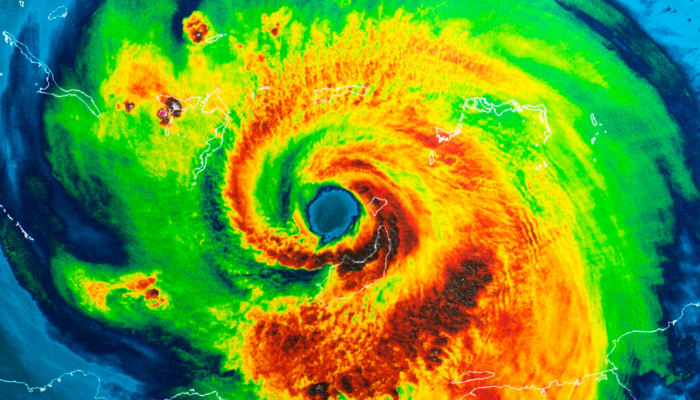Disaster Preparedness Tips for Pet Owners

August 31, 2020
The peak of Atlantic hurricane season is here which is why it's important to take some time to reflect on disaster preparedness.
As unlikely as it may seem, a disaster can strike at any moment. Whether it's a fire, tornado, hurricane, flood, or blizzard, it's critical to be prepared and have a plan in place.
There's a lot to consider when creating a disaster plan – especially if you have a spouse, children, or other close family members. You can utilize this American Red Cross resource or this Federal Emergency Management Agency (FEMA) resource to create a family disaster plan.
If you're a pet owner, you need to include your animals in your disaster plan as well. If you don't, you could be inadvertently putting yourself, your pet, and first responders in danger.
It's up to you to find out which shelters allow pets and what types of assistance are available for pet owners in an emergency situation. Creating a 'safe' place at home is not sufficient and, if you leave your pet behind, they will likely get lost, injured, or worse.
The Center for Disease Control and Prevention (CDC) recommends following these tips to make sure you're ready to assist your pet during an emergency:
1. Heed your veterinarian's advice
Make sure your pet wears a collar with up to date information on it, get them microchipped, and have them vaccinated. These recommendations will come in handy during a disaster and help you avoid any potential pitfalls, such as being unable to get into a shelter with an unvaccinated pet or losing them during an evacuation. If possible, take your pet's medical records with you and attach their rabies tag to their collar.
2. Find out which shelters allow pets
Do some research into where you can safely evacuate with your pet during a state of emergency before a disaster occurs. Your local police department can typically give you this information. If not, they'll likely be able to point you in the direction of someone who can. Though unfortunate, it is not true that hotels must accept pets during evacuations, so please keep that in mind while planning ahead.
3. Prepare a pet disaster kit
In a suitcase or other easily movable storage container, pack food and water bowls, a manual can opener, two weeks' worth of canned food and bottled water per pet, plastic poop bags, litter and a small litter box, and two weeks' worth of any medications your pet may need. You should also pack cleaning items, sturdy leashes and harnesses, toys, and a copy of your pet's medical records. For small animals and cats, have a carrier ready. Use this checklist to prepare.
4. Create handouts
Create an identification handout and a boarding instruction handout. Have both ready to go at a moment's notice. They should contain important information, such as your pet's name, age, sex, markings, microchip number, allergies, and vaccination status.
If you get separated from your pet, make sure you're safe before you begin your search. If you're in a shelter that houses pets, inform a caretaker and provide them with the identification handout. Once you've been given the OK to leave the shelter and return home, contact animal control and call the microchip company to make sure all information about you and your pet is current.
Disasters are unpredictable but that doesn't mean you can't be prepared. For more information regarding how to create a plan, reference this Ready.gov resource.




